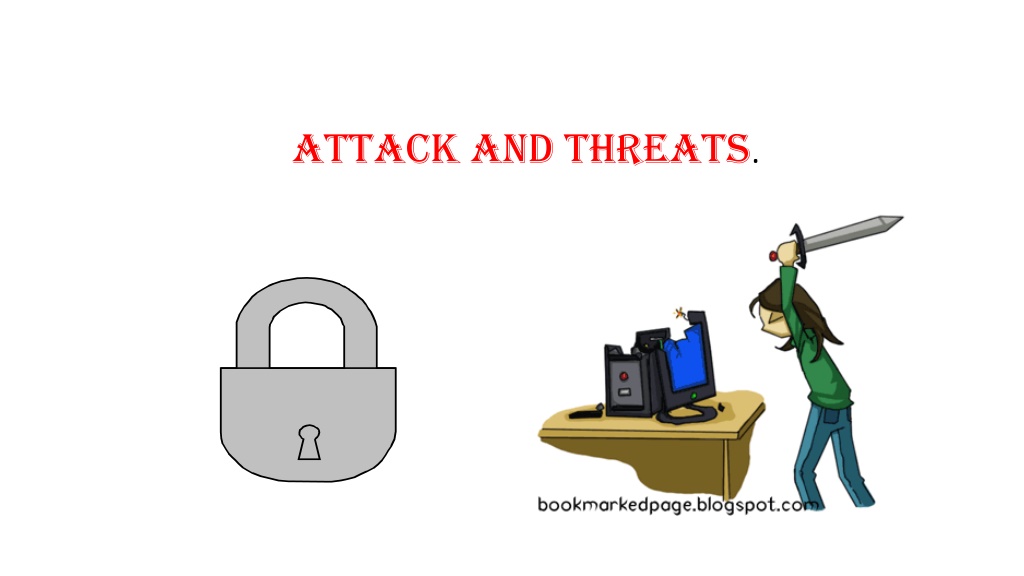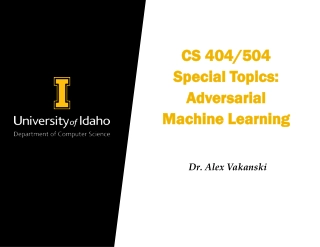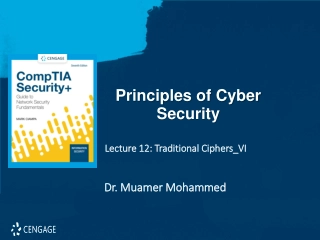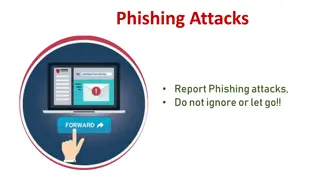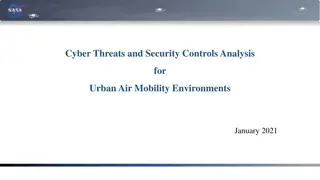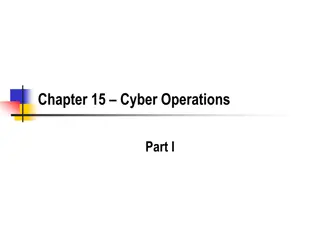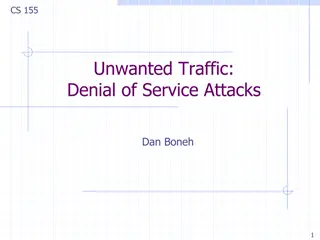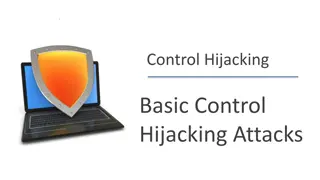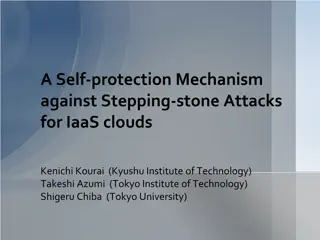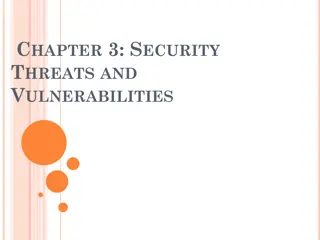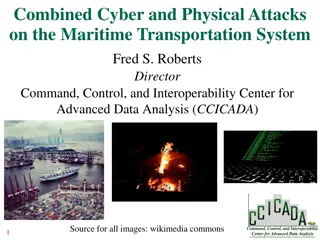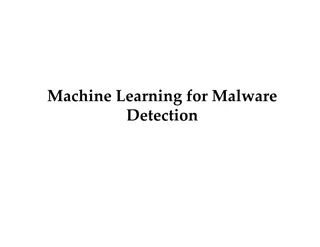Understanding Threats and Attacks in Information Systems
Threats and attacks pose risks to information systems through vulnerabilities that can be exploited, leading to data loss, system unavailability, and compromised security. Four primary classes of threats include unstructured threats from inexperienced individuals, structured threats from skilled hackers, external threats from outside sources, and internal threats from authorized users. Negative effects of threats include weakened security, performance interference, data destruction, and information unavailability.
Download Presentation

Please find below an Image/Link to download the presentation.
The content on the website is provided AS IS for your information and personal use only. It may not be sold, licensed, or shared on other websites without obtaining consent from the author. Download presentation by click this link. If you encounter any issues during the download, it is possible that the publisher has removed the file from their server.
E N D
Presentation Transcript
THREATS AND ATTACK THREATS Threats A set of circumstances or events that has the potential to course loss or harm an information system by destroying it, disclosing the information stored on the system, adversely modifying data, or making the system unavailable. Threats can be avoided by blocking of vulnerabilities.
Vulnerabilities Refer to a weakness in an information system or its components that might be exploited to compromise the security of the system.
Four primary classes of threats in network security 1. Unstructured threats. Unstructured threats inexperienced individuals using easily available hacking tools such as shell scripts which used command line interpreter and password crackers. consist of mostly
2. Structured threats Structured threats come from hackers who are more highly motivated and technically competent. These people know system vulnerabilities and can understand and develop exploit code and scripts. They understand, develop, and use sophisticated hacking techniques to penetrate businesses. unsuspecting
3. External threats. External threats can arise from individuals or organizations working outside of a company. They do not have authorized access to the computer systems or network. They work their way into a network mainly from the Internet or dialup access servers. 4. Internal threats. Internal threats occur when someone has authorized access to the network with either an account on a server or physical access to the network.
NEGATIVE EFFECTS OF THREATS IN INFORMATION SYSTEMS
Weaken computer security or provide backdoor into protected networked computer It reduce computer performance due to interference of systems Lead to destroying information or data in the computer system It cause modifications of information or data in the information systems Lead to unavailability of essentials information or data in the computer systems
ATTACK Attack is the deliberate act that exploits vulnerability OR Is the actual attempt to violate security.
Attackers need MOM (Method Opportunity Motive) Method; It is the Skills, knowledge and tools which is used to attempt an attack Opportunity; Time and access to attempt an attack Motive; A reason to attempt an attack
Types of attack Harm to information systems can be affected on four different ways Interruption: This is an attack on availability Interception: This is an attack on confidentiality Modification: This is an attack on integrity Fabrication: This is an attack on authenticity
Four primary classes of attacks 1. Reconnaissance: Is unauthorized discovery and mapping of systems, services, or vulnerabilities it is also known as information gathering.
2. Access: System access is the ability for an unauthorized intruder to gain access to a device for which the intruder does not have an account or a password. Entering or accessing systems to which one does not have authority to access usually involves running a tool that exploits a known vulnerability of the system or application being attacked.
3. Denial of service: Denial of service implies that an attacker disables or corrupts networks, systems, or services with the intent to deny services to intended users. DoS attacks involve either crashing the system or slowing it down to the point that it is unusable. But DoS can also be as simple as deleting or corrupting information.
4. Worms, viruses, and Trojan horses: Malicious software is inserted onto a host to damage a system; corrupt a system; replicate itself; or deny services or access to networks, systems or services. They can also allow sensitive information to be copied or bounce back to other systems.
Measures which can be used to protect the computer system from security threats and attacks
Locking your computer with a password. Installing Anti-Virus software and ensure it is up- to-date. Using up-to-date software (operating systems and user applications) Logging off or shutting down your computer when going away. Make a backup of your important documents and data.
Protect your files with passwords Before clicking on any e-mail attachment, make sure that the attachment is scanned even if you know the source. Before using media given to you by someone else, scan it to remove viruses
REFERENCES Stallings,W.(2002), Cryptography and Network Security. Second Edition Andress and Amanda. (2004). Surviving Security: How to Integrate People, Process, and Technology. Second Edition, AuerbachPublications Anderson, Ross, J and Wiley,J. Security Engineering: A Guide to Building Dependable Distributed Systems.
